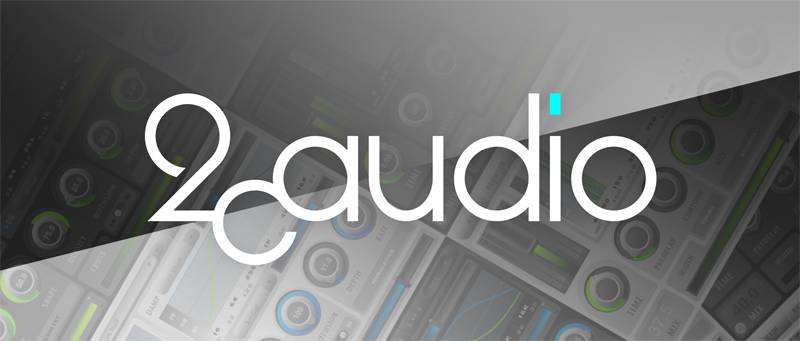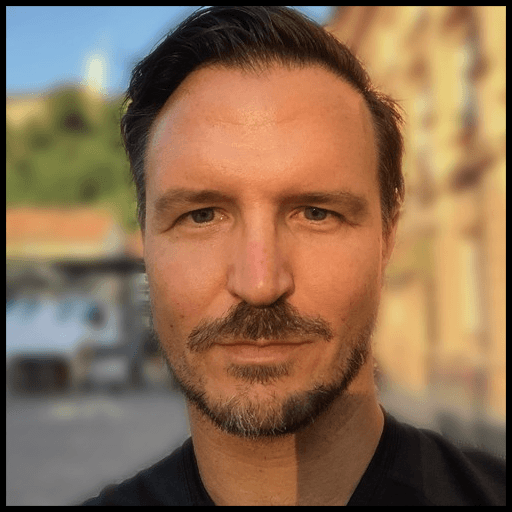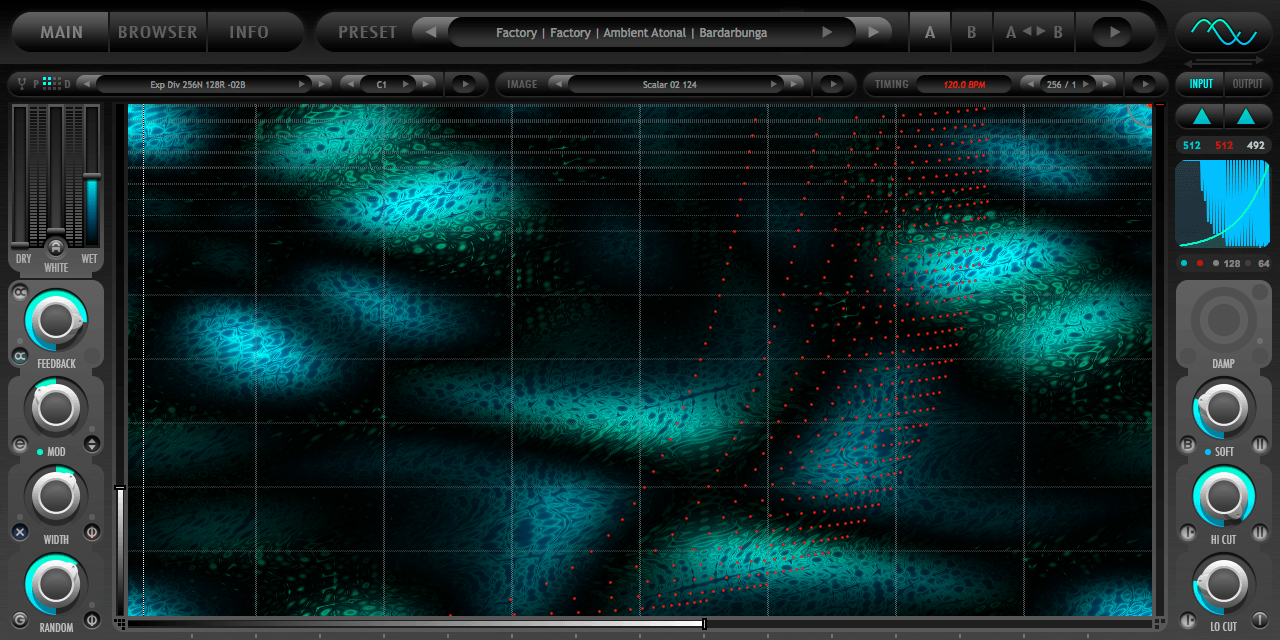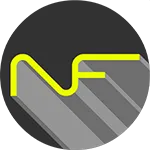26. May 2017 | Developers | Carl
Talk-Zone #57 Interview with 2CAudio

Welcome to this interview Andrew. You’re a part of the 2CAudio family. Let’s introduce yourself what 2CAudio is doing and how it all began. How many people are working at 2CAudio?
Greetings! It’s a pleasure to be here.
2CAudio was formed in 2008 as a partnership between myself and Denis Malygin to develop audio signal processing software plug-ins focusing on spatialization, advanced creative effects, and other future-forward ideas. Since then 2CAudio has gone on to win major industry awards, and its products are heard daily by millions of people around the world. We offer some of the best reverbs on the planet among other highly innovative and creative things, such as Kaleidoscope.
Both Denis and myself have a history in our industry that goes back long before 2CAudio was even started. At the time I was running my content creation and services company, Galbanum, which was, and is still is, developing sound-design tools and sample libraries and licensing technical content to partners such as Native Instruments, Alchemy, ROLI, Tone2, and many others. I was, and still am, also active in film, TV, and game scoring, and electronic music, and I recently have been releasing neo-classical solo piano material which was one of my very fist loves in music, going back 25 years now. So I came to 2Caudio with a heavily creative background; I think in terms of being a composer, producer, and sound-designer, and this background and mindset heavily influences our work. Creativity is in our DNA because I am effectively a creative artist, just like many of our customers.
Denis comes from the more formal computer science background, and has been writing plug-ins and audio signal processing code professionally since his early 20s if not before. He has a master’s degree in computer science from one of the best technical universities in Russia. He was a cofounder of the former company Spin Audio that released some excellent products in the early 2000’s. He was coding hand-written assembly language before I really knew what a “for loop” was!
Over the years, our relationship evolved as needed to achieve our product goals. Developing something as complex as Kaleidoscope for example, is a massive undertaking for two people and there are tons of moving parts to coordinate, and integrate into the myriad of host and OS requirements. Additionally, perhaps because I am an artist, I tend to suffer from large amounts of OCD and perfectionism when it comes to most everything and certainly to issues of sound-quality and mathematical precision. I often found myself dissatisfied with the traditional solutions to various DSP challenges we faced. So I became more and more directly active in the coding of our products myself, and over-time became our resident expert in the math and theory aspects of our products.
Today I code the raw algorithms we use in our products in C, and I work out all of the tuning of their parameters. I do thousands and thousands of listening tests and analytical evaluations to check and refine our algorithms. I basically define “what” and “why”, work out the math for it, and do some of the initial work on answering “how”. Denis has evolved into the “systems architect” position. He is now almost entirely concerned with “how”. The how question, involves things such as how do we optimize the algorithm itself, which I am involved with initially, and then how do we structure and “vectorize” it to make it as blazingly fast as possible on current CPUs. It also involves all the integration topics related to plug-in standards, hosts, and OSs. It also attempts to answer how do we organize our code in such a way that a small team can manage it over years and decades and reuse critical parts while adding functionality etc. The how questions are very complex and we found that to really excel at them it helps to have one member of the team focusing almost exclusively on these topics, and we are very lucky to have someone as skilled as Denis handling these topics. Thus, in short, Denis has become the systems architect of our team, and I have become the product and algorithm designer and mathematical-theory DSP expert.

My favourite plugin of 2CAudio is Kaleidoscope. Let’s tell our readers which features are included and for which purposes could it be used?

Kaleidoscope is the ultimate sound-design tool and creative effects toy! It is designed with one goal in mind: to inspire and invigorate composers, sound-designers, and artists to push the boundaries of what is possible in cutting edge sound-design. It is a tool that allows users to control and manipulate sound using images that represent massive amounts of modulation data that controls timing and spatial position of 512 independent physically modeled resonators.
Kaleidoscope can be used as an FX processor where the incoming audio signal is used to excite the resonators to produce things such as Harmonic & Tonal Reverb, Granular Effects, Dynamic Resonator Effects, Dynamic Filter Effects, Extreme Textural Effects, Vocoder-like Effects, Morphing Delay Effects, Extreme Spatialization & FIRs effects, Automated Volume & Panning effects, and things that defy classification.
Kaleidoscope can also be used a generative synthesizer to produce novel content without any audio or MIDI input signal at all. In this modality Kaleidoscope behaves something like additive synthesis where we dynamically sum hundreds of voices to create incredibly ornate shifting poly-rhythmic synth patterns, textures, ambient drones, atonal sound FX for visual media, and much more. We explore these synthesizer aspects of Kaleidoscope even more in the next version.
Kaleidoscope is effectively a tool that offers ultimate control over the musical organization of sound in time, frequency, and spatial location. It allows users to sculpt and construct musical and sound structure that would almost impossible to construct with any other method. It is incredibly fertile ground for composers and sound designers to explore and come up with truly novel and exciting results.
You’ve got also some other very interesting plugins like Aether, B2, The Perfect Storm and Breeze. What makes your tools different from other products on the plugin market?
I think two things really set us apart from the competition: creativity, and precision. In 2008-2009 when we first released Aether convolution verbs were king of the plug-in market, and there was no really strong algorithmic verb yet on the market the rivaled or beat the hardware legends. We effectively came along and dethroned both, with the very first effort of our new company. We did so with creativity and with precision.
Convolution is very good at exactly replicating a given sound at a given position in space at a given moment in time. The problem with convolution, or rather not the mathematical process of convolution itself, but the practice of using convolution to convolve a musical signal with the impulse response of a real physical space, is that the real physical space is built according to mathematical design principals that are defined in hopes of having a particular effect on the acoustics of the concert hall, but such buildings are always built within the practical confines of construction techniques, costs, and annoying things like gravity. The audience sadly can’t float midway between floor and ceiling, the ceiling can’t be made of water, and the walls are not going to be made of 50 meter thick marble even if this is what would give the best sound. Furthermore the process of capturing the impulse response is usually not perfect or immune from environmental factors such as background noise. So convolution imperfectly captures an imperfect approximation of a desired result, and is valid for only one static moment in time.
Why not skip all of that and just model the desired result? And since when is modern music production always concerned with exactly what happens in a concert hall that was designed for classical music performance? Flangers, phasers, ping-pong delays, and synth pads for example, don’t really exist in the concert hall, but they have existed in music production for quite some time and are widely loved. People have been doing weird and wonderful things to sound for quite some time. There is no right answer for all possible scenarios. So the best case scenario is to understand all the psychoacoustic phenomena that are possible and the mathematics that can create such things, and then create an algorithm that can model such things as well as bend the model to more extreme values that are not exactly natural in the sense of what normally is found in concert halls, but may be desirable creatively within the context of modern music production. Furthermore such algorithms can be made dynamic over time. In other words, they modulate in very interesting ways that make them much more alive than static convolution. We fully embrace this kind of creative thinking in all of our reverb products, and the creativity of Kaleidoscope should be self-evident.
With regard to precision, all of our products use double precision processing. Aether, B2 and Kaleidoscope offer oversampling. Aether and B2 offer extreme interpolation methods. All of these things combined create incredibly clean signal paths in our products with result in noise floors well below the limits of human hearing and the best DA converters in existence. We have noise-floors in the -150dB to -300dB range! You can pass any signal you like into our algs, crank up modulation depth and rate and you will NOT get a wall of noise or other nasty artifacts that are commonly found in other competitive products. We have by far the cleanest modulation available in our algs. Sometimes noise and artifacts are cool for creative purposes — I get that, but we feel it should be a creative decision to add such things to your mix, not a side effect of a poorly designed product that is unavoidably imposed upon the user.
Your website is very attractive and the design of your plugins too. It seems you’re attaching great value of perfection. „Good enough“ is not good enough for you, right?
Yes, absolutely! Thanks kindly for noticing! I have been involved in one way or another in our industry from a very early age. Even as a teenager I was already extremely active as a beta tester for companies such as MOTU, Waves, Prosoniq, Sound Toys, U&I Software and many others. I often got myself in trouble for overstepping my bounds in this capacity and making extensive product revision and feature suggestions. I was that guy! LOL. I suppose it was inevitable that I would eventually make my own products. In terms of product perfectionism, I suppose all that time I spent on QA topics as a very active beta tester in my younger years has rubbed off onto our products. It’s fairly rare for any major issues to even make it to beta-testing in our case.
A common quote attributed to Mark Zuckerberg is “Done is better than perfect.” For better or for worse, I find it extremely difficult to follow this advice. For me the formula is simple: “Done equals Perfect”! I would probably be richer if I listened to Zuckerberg, but my OCD perfectionist artist side almost always wins. Sometimes our deadlines and timelines suffer, but the result is usually worth the wait.
This general mentality extends to our graphic design, GUIs, and websites as well. There is usually a point in every project we do where some member of the team or a contractor thinks I am completely insane for pushing too hard, asking for too much, obsessing over microscopic details, “painting the back side of the fence”, etc. That’s usually how I know we are on the right path!
How much time does it take to develope a plugin (on average)?
It is highly variable depending on the product and whether or not we have done anything similar to it in the past. For example it was relatively easy to get from Aether to Breeze, because Breeze is built using some of the same technologies that exist in Aether. It was fairly similar for B2 as well. Even in these cases, it is never quite as simple as it seems though because as soon as we start opening something up and working on it, we almost always find one way or another to find “one last thing” to perfection-ize, and this can go on for quite a while. I have a business degree, so I should probably be better at project management and deadlines, but ultimately, I am much more of an artist and a scientist than I businessman I suppose. I am motivated more by pure knowledge and the pursuit of perfection than I am by money.
For a product like Kaleidoscope that was completely new for us, is highly complex, and has tons of new technology, it can take forever. We have spent many years of full time effort on Kaleidoscope by now. The time invested into this RnD however, helps all of our products, not just Kaleidoscope. My personal DSP/math/coding skill set has grown tremendously because of our work on Kaleidoscope.
Where do you get your inspiration for new amazing products and which technology inspires you?
Great question. The 2CAudio slogan is “Convergent Creative Precision”. The first word, convergent, represents our understanding of the universal trend in knowledge and discovery that tells us that over time disparate segments of art, science, technology, and thought merge and become one, and therefore wisdom and progress in one discipline can often be successfully applied to another. Practically what this means, is that more often than not, we find inspiration from areas outside our industry rather than from within it. A multitude of developers in the audio world spend enormous amounts of time analyzing classic gear to make emulations of it. They spend incredible resources to develop sophisticated methods to achieve such emulation. We respect their efforts, but this is not us. I leaned much more about reverb algorithm design by studying branches on trees than I did by trying to analyze a Lexicon 480-L for example, with all respect and credit to Lexicon for its achievements of course. In general I spend almost all of my research time trying to improve my pure “math and science” skills and trying to better understand the natural world. I am deeply inspired by the awe and beauty of the natural world, and the mathematical principals that seem to govern it. I suppose one could say, my specialty and primary area of interest is the “mathematics of aesthetics”. This obviously translates quite exactly into work on something like Kaleidoscope, but you may be surprised to know it has direct application to reverb as well once you get deep enough.
You are offering also additional sound-/presetpacks to your tools, what can you say to this?
We tend to make extreme products aimed at knowledgeable professional users. We make power tools for power users. Most of our products have a lot of options and settings and their parameter space allows for extremely diverse results. This is a dream come true for sound-designers and people who love to “geek-out” and experiment. However, even the most knowledgeable pros, sometimes, and indeed more often than not, have limited time due to the pressure of a deadline or other similar reason. They need fast results. Even in my own personal creative work, I realized that some days I like to turn on the creative brain, and other days I like to turn on the science brain. If I am working on a piano composition for example, I should be focused on my performance aspects such as phrasing and dynamics, or compositional devices such as harmonic development, more than the current parameters of my algorithmic reverb. In many ways, it’s better to have a division of labor, even if the labor is done all by the same person.
This division of labor has more or less always existed in synthesizers. How many people have ever played a DX-7? How many create custom presets for it? Some of our products have a complexity level similar to a synthesizer. Kaleidoscope, is effectively a synthesizer, and one that makes use of a skill set that is fairly foreign to many traditional musicians (i.e. graphic design, tuning theory, etc.).
Excellence simply requires focus. Oftentimes pros have more important things to focus on than making custom presets. Our expansion packs are made by top sound-designers and producers, and sometimes myself, who have spent enormous amounts of time to explore the far corners of the parameter space of our products and bring back truly magical gems for the rest of us to use in our music productions. This can be a very valuable asset.
Expansion pack content can easily be customized to make it personal as well of course. We offer many ways to achieve that in our products.
Can you give us a little production tip or do you have a secret function in Kaleidoscope or the other ones?
The most important not-so-secret function in Kaleidoscope is the “WHITE” control. This control mixes white noise into the input signal in a specialized way. At a 100% setting it will completely “erase” the tonality of the input signal, producing white noise that follows the envelope of the input signal. This is useful to tame wild resonances that can occur when the tonality of the input signal matches Kaleidoscope’s tuning exactly, as well as to change the tonality of a sound completely while retaining its rhythmic information.
At a 200% WHITE setting the input signal will be completely ignored and Kaleidoscope will be processing pure white noise. In this mode Kaleidoscope is effectively a generative synthesizer. It can be thought of a 512-voice synth where the image is effectively the performance, much a like a highly advanced piano-roll notation that also dynamically controls gain and panning for each voice independently. Incredibly intricate sound-sculptures can be created this way, and the next version of Kaleidoscope explores this territory even more.
2CAudio is well known for very creative and futuristic plugins and soundpacks. Which kind of plugins or expansion packs could your fans expect next?
We have completed most of the work for the next version of Kaleidoscope already. It contains a pretty massive amount of changes and new additions. I have said it before, and at the risk of sounding arrogant I will repeat it: I honestly believe that once we achieve the full original vision for Kaleidoscope, it will become a tool of incredible historical significance to the world of electronic music and sound-design of all forms. It has the potential to change the landscape of these fields with an impact equal to that of something like the original Moog analog synthesizer. It is a very audacious goal, and we never expect it to be easy, but to quote JFK if I may, we choose to do these things not because they are easy, but because they are hard. We will metaphorically go to the moon, to Mars, and way beyond both with Kaleidoscope, trust me!
In addition to that, we have new research completed for our reverbs, and some completely unrelated products in the pipeline that we have been developing for a while now. We have been buried in deep RnD the past couple years actually, and the fruit of this labor is just about ripe to pick and share with the world. We are very excited to share it!
We understand you’ve agreed to extend a special give away exclusively for Noizefield, right? What need people to do to participate on it and whatare the prizes to win?
Yes, we are happy to be able to agree to do something for Noizefield readers and support the community. We are offering 4 different prizes for Noizefield readers: one of each of our product packs, namely: 1 Kaleidoscope Pack, 1 Aether Pack, 1 B2 Pack, and 1 Breeze Pack. To qualify, just write a comment at the Facebook post at Noizefield and you will be entered to win one of our tools till 30th June 2017. Noizefield will select the winners.
Now you’ve got the chance to tell our readers asomething, that people didn’t knew before about 2CAudio. (e.g. an unknown secret, thankgiving words to your supporters, a funny anecdote, why did you call your company 2caudio etc..)
2CAudio was founded by an American and a Russian. Both of us were born in 1975 in the middle of the Cold War. Fortunately I missed out on the Russiphobia and McCarthyism of 1950s, but we still had plenty of implicit programming from Hollywood and elsewhere telling us Russians were the bad guys etc. I am reasonably confident Denis had the same programming in the opposite direction. Even in 2014 when I visited Russia for the first time, flying over Ukraine from Romania the day before the Malaysia Airlines Flight 17 tragedy, I half expected to find Martians or Vulcans with green blood that ate babies for lunch. And this is from an open-minded creative person who works in an innately international industry, with many foreign friends, who was already in daily communication with a Russian citizen for many years!
Well, let me be the first to tell you, Russians do not have green blood! All of the ones I met, including strangers on the street, and families who invited me to their “dacha” for a summer picnic, were seemingly kind and loving people no different than you or I. As I wrote in the linear notes of my piano composition “Without Borders”, which I composed that summer at the piano in an apartment across the street from the Mariinsky Theatre Concert Hall in St. Petersburg:
Despite our small cultural differences, people everywhere generally want the same things. We all look quite similar when we smile and laugh as well as when we cry.
http://www.galbanum.com/music/autumnrains
I grew up in the heartland of Pennsylvania, went to university in Southern California, in Los Angeles, and most recently lived in Washington, DC for over a decade. My father is from New York City. I am an American through and through, and am proud of it. But one can love America and the values it originally espoused without the need for everyone else to come in second place. We seem to be heading into dangerous thinking recently, and I don’t mean specifically because of any given election result. Fear in various ugly forms, seems sometimes to be on the rise. This is quite sad.
It is my hope that 2CAudio might be a small example of what is possible when people of different backgrounds learn to work together. We are all stronger when we respect and learn from one another. We achieve more when we build bridges instead of walls.
More information: 2CAudio
HIT OR SHIT Indicator
Average Indication by Readers
What do you think?
Hit or Shit? Please rate from 1 (💩) to 10 (🚀)




